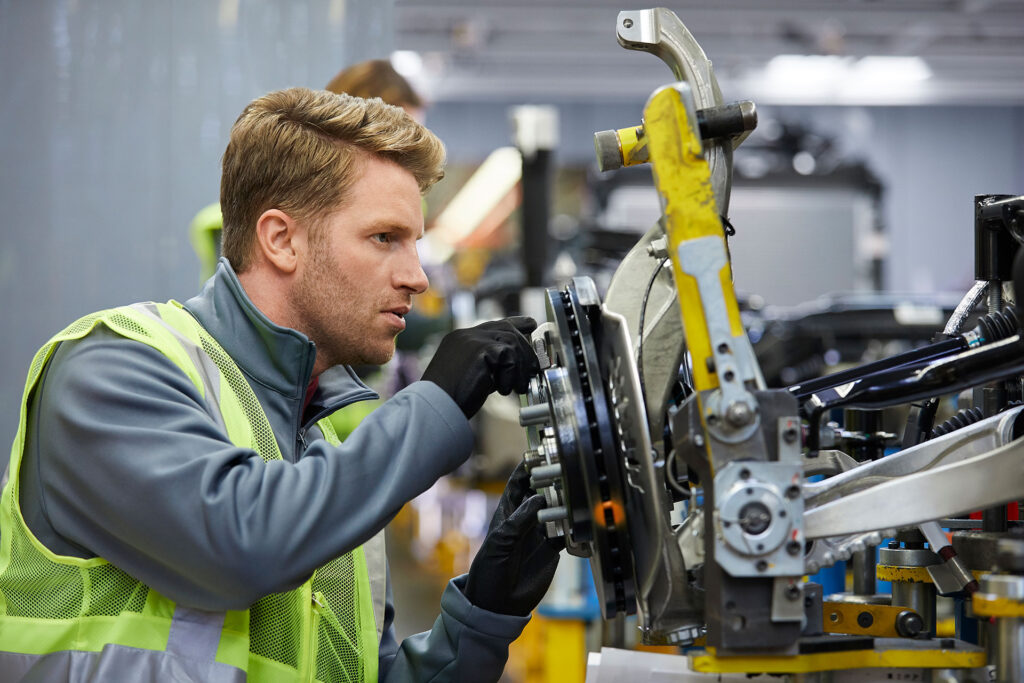Types of Tools for Machinist Jobs, Explained
Types of tools for machinist jobs
In manufacturing and production, machinists play a key role in precision and craftsmanship. But becoming a machinist requires an understanding of the tools needed for the job.
If you’re interested in the world of machining, this blog article takes a closer look at the equipment machinists need to get started.
What is a machinist?
A machinist is a skilled professional who’s proficient in using machine tools and adept at setting up grinders, lathes, and intricate machinery. According to the U.S. Bureau of Labor Statistics, the field employs more than 389,000 individuals, primarily in machine shops and in the manufacturing of turned products and screws, nuts, and bolts.
Machinist qualifications typically include strength, precision, the ability to interpret plans, and an eye for detail. In addition, there are tools these professionals need to know how to use for their career growth and development.

8 essential tools for a machinist
Whether you’re a manual or CNC machinist, or focusing on tool and die making, the basic tools you’ll need are mostly the same. Here’s a breakdown of the fundamental equipment every machinist should have.
1. Calipers
Calipers help measure distances accurately, so they’re important for making sure parts are the right size and shape. By measuring diameters and depths, machinists ensure everything fits perfectly and works as it should. Calipers are commonly used to:
- Measure part dimensions.
- Check tolerance levels.
- Verify the accuracy of the machining process.
- Enhance quality control inspections.
- Set up and operate machinery.
2. Micrometers
Micrometers are crucial for verifying that parts are made exactly to the right size, especially for delicate tasks such as making threads or measuring thin materials. Machinists rely on micrometers to meet strict tolerances that help them maintain quality control standards in production processes.
3. Depth gauges
Depth gauges help machinists accurately measure the depth of holes, slots, or recesses to exact specifications. These instruments are used during drilling, milling, and boring to ensure holes are the right depth — crucial for assembly work and function.
4. An edge and center finder
Finders position cutting tools and workpieces precisely on milling machines and lathes, which saves time during setup and aligns components correctly for accurate machining. These tools are often used for:
- Finding the middle of a round piece to drill or mill holes.
- Locating the sides of a metal plate or block.
- Centering a hole with the machine’s spindle for milling or turning.
- Preparing a workpiece to turn or shape correctly.
- Locating the center of a circular part for further machining.
5. Deburring tool
A deburring tool can remove sharp edges, burrs, and rough spots left after drilling or milling. Smoothing metal or plastic parts improves the safety and appearance of machined components. This tool proves most valuable in the final stages of production: readying parts for assembly or painting. Enhancing the finish and functionality of machined parts guarantees they meet industry and quality control standards.
6. Dial indicator
With a dial indicator, machinists can spot tiny deviations and adjust machines for accurate cuts and alignments. This boosts precision in tasks such as setting up workpieces or checking machine performance. Machinists find a dial indicator handy for:
- Checking if rotating parts like shafts or pulleys wobble.
- Making sure pieces sit straight on milling machines or lathes.
- Checking if surfaces are level on parts or machine tables.
- Making tools exactly the right height on milling machines or lathes.
- Aligning cutting tools and pieces when working.
7. Cutting tools
Cutting tools help machinists shape metal, plastic, and other materials. These are some of the most common pieces of cutting equipment:
- End mills.
- Drill bits.
- Reamers.
- Lathe tools.
- Inserts.
- Taps and dies.
- Countersinks.
These tools can drill holes, carve slots, and shape surfaces on a lathe for precise cutting and shaping. They are used to make intricate parts and ensure exact sizes and smooth finishes.
8. Calculator
A calculator can determine speeds, feeds, dimensions, measurements, angles, tolerances and other critical parameters for cutting tools and machine settings. Whether determining material removal rates or converting units, machinists use calculators to streamline tasks, reduce errors, and enhance efficiency.
Best practices for tool maintenance and workplace safety
The quality of a machinist’s tools depends on how well they’re kept up. Best practices for preserving the functionality of machinist tools include:
- Regular cleaning.
- Lubrication.
- Calibration.
- Appropriate handling.
- Proper storage.
- Routine inspections.
- Adequate training on usage.
- Documentation of maintenance activities.
Prioritizing safety protocols as a machinist is non-negotiable. Professionals must adhere to stringent safety guidelines to prevent accidents and protect themselves and others in the workplace. From wearing appropriate personal protective equipment to conducting regular safety inspections, a machinist’s commitment to safety supports smooth operations for everyone on their team.
Taking the next steps as a machinist with ResourceMFG
The journey to becoming a machinist begins with mastering essential tools and prioritizing safety protocols. If you’re ready to get started on your path to machining, ResourceMFG is here to help. We support job seekers by offering opportunities for growth and advancement in the machining field and beyond.
With flexible employment options, comprehensive life and career skills courses, and strong industry relationships, ResourceMFG empowers individuals toward professional and career development. You can explore all our job opportunities or contact us today to learn more.